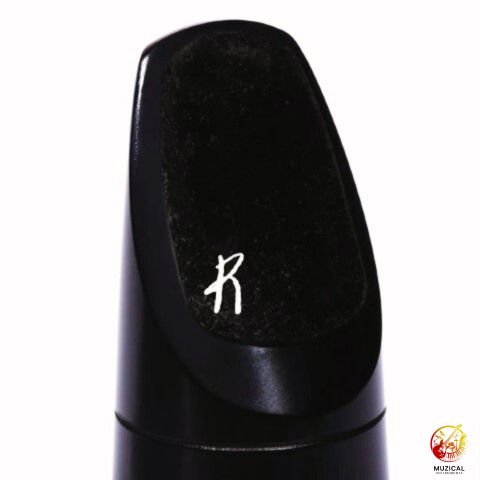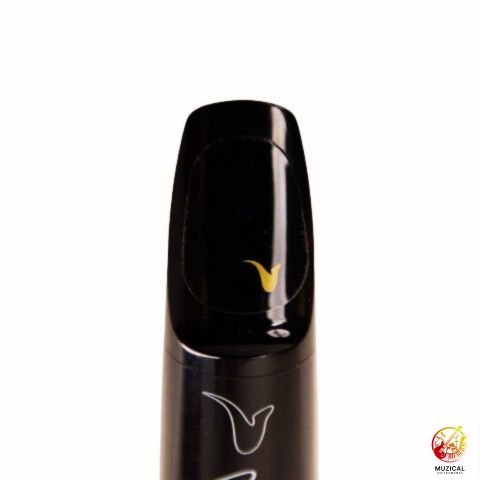Best Clarinet Mouthpiece Patches in USA 2025 – Complete Buyer’s Guide
Affiliate Disclosure
This post may contain affiliate links. If you buy through them, I may earn a small commission at no extra cost to you. This helps support the site and keeps our content free for you.
If you prefer not to use affiliate links, you can search products directly on the maker’s site.
Many players bite too hard on their clarinet mouthpiece without realizing it. After long practice sessions, teeth start to ache, and bite marks appear on the mouthpiece.
That’s where mouthpiece patches help. These small cushions protect both your teeth and your gear while making playing more comfortable.
In this guide, you’ll discover the best clarinet mouthpiece patches in USA, learn how they work, and find out how to apply them the right way.
By the end, your clarinet will feel better and so will your teeth.
Quick Comparison: Top Patches in USA at a Glance
| Brand | Image | Material | Thickness | Best For | Rating | Check Current Price |
|---|---|---|---|---|---|---|
| D’Addario Reserve |
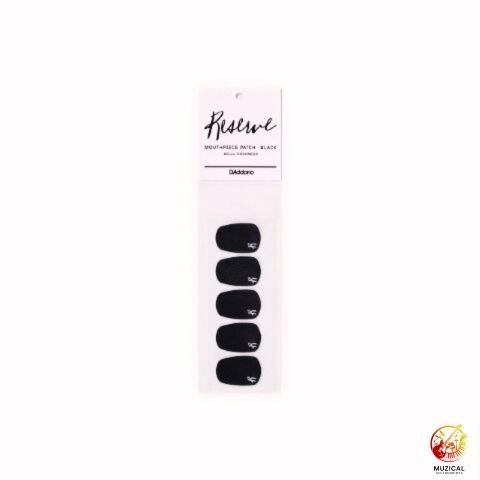 | Silicone | 0.35/.8mm | Intermediate/Professional | 4.8⭐ | Price |
| Backun |
 | Premium Silicone | 0.4mm | Professional | 4.7⭐ | |
| BEHN Tape |
 | Adhesive Tape | Custom | All Levels | 4.5⭐ | |
| Vandoren |
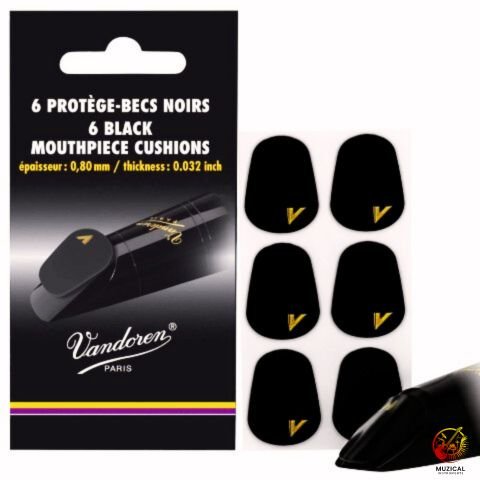 | Felt | 0.35mm | Beginner/Sensitive Teeth | 4.5⭐ | Price |
| Earspasm |
| Silicone | 0.5mm/0.8mm | Budget-Conscious | 4.3⭐ | |
| BG (A10L) |
 | Silicone | 0.8mm | Intermediate | 4.5⭐ | Price |
Why Use Mouthpiece Patches?
Here’s why smart clarinet players always use patches:
They Save Your Mouthpiece
Good mouthpieces cost serious money. Patches stop your teeth from leaving permanent marks or scratches. It’s like insurance for your gear.
Playing Feels Better
That hard mouthpiece can hurt your teeth during long sessions. Patches add cushioning that makes everything more comfortable. You can practice longer without pain.
Better Grip
Patches give your teeth something to grab onto. This stops the mouthpiece from sliding around when you play. Your sound stays more consistent.
Sound Changes
Some players say patches change their tone slightly. It’s not always better or worse, just different. You might like it, or you might not. The only way to know is to try.
How to Pick the Right Patch
Don’t just grab the first patch you see. Here’s what matters:
What It’s Made Of
Most patches use silicone, rubber, or felt. Silicone lasts longest but feels a bit fake. Rubber feels more natural but wears out faster. Felt is super comfortable but needs replacing more often.
How Thick It Is
Thin patches (around 0.4mm) barely change how your mouthpiece feels. Thick ones (0.8mm or more) add lots of cushioning but change the feel more. Most people like something in between.
Size and Shape
Most patches fit standard clarinet mouthpieces just fine. But if you have an unusual mouthpiece, check the size first.
Sticky Stuff
The glue needs to stick well but come off clean. Cheap patches might leave gunk on your mouthpiece or fall off mid song. Not fun.
The Best Patches You Can Buy
1. D’Addario Reserve Mouthpiece Patches
They’re 0.35/.8mm thick and made from clear silicone.
What’s Good: They last forever, stick really well, and come off clean. You can find them almost anywhere that sells music stuff.
What’s Not: Some people think they feel too artificial compared to felt patches.
Who Should Buy: Perfect for serious players who want patches that just work without fuss.
Where to Get Them: Guitar Center, Sam Ash, Amazon, pretty much everywhere.
These are probably the most popular patches among pros. The silicone material means they don’t wear out like felt ones do.
2. Backun Mouthpiece Patches

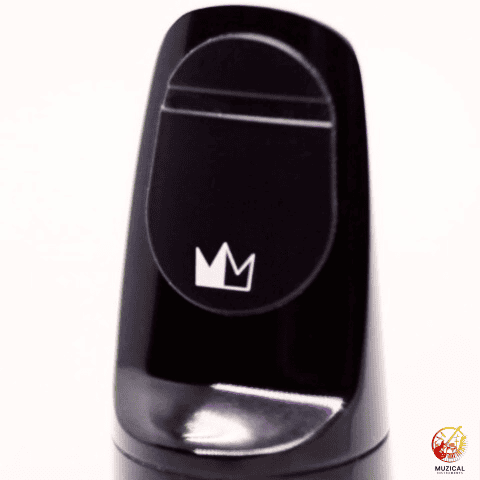
They’re thin at 0.4mm and use fancy 3M glue.
What’s Good: Top quality materials and super thin so they barely change how your mouthpiece feels.
What’s Not: Cost more than other options. You might need to special order them.
Who Should Buy: Professional players who want the best money can buy.
Where to Get Them: Backun dealers or straight from the company.
If you’re serious about your sound and don’t mind paying extra, these are worth it. The thin design means minimal change to your playing feel.
3. BEHN Mouthpiece Cushion Tape

You cut off what you need.
What’s Good: You can make it exactly the size you want. Comes off without leaving any mess.
What’s Not: Takes more work since you have to cut it yourself.
Who Should Buy: People with weird shaped mouthpieces or those who like doing things their own way.
Where to Get Them: Online music stores and woodwind specialty shops.
The tape format is unique. It’s perfect if you can’t find pre-cut patches that fit your mouthpiece right.
4. Vandoren Mouthpiece Cushions
These felt patches are 0.35mm thick.
What’s Good: Super comfortable and absorb vibrations really well. Feel the most natural.
What’s Not: Don’t last as long as silicone ones. Might change your sound more.
Who Should Buy: Players with sensitive teeth or anyone who wants maximum comfort.
Where to Get Them: Most music stores carry these.
If comfort is your main concern, these are hard to beat. The felt material provides more cushioning than any other option.
5. Earspasm Silicone Mouthpiece Cushions
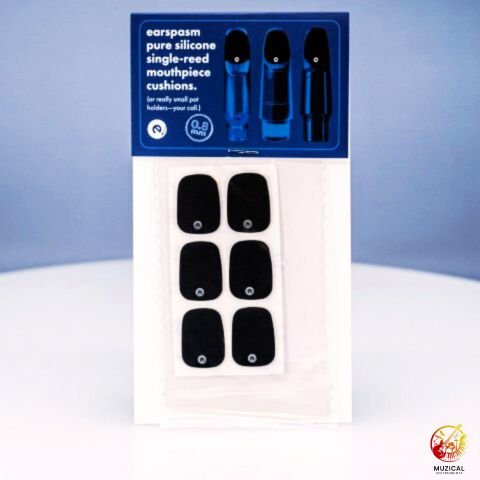
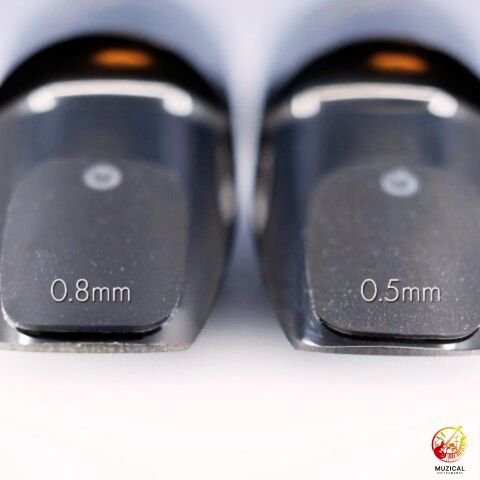
They come in both 0.5mm and 0.8mm thickness.
What’s Good: Great value for money. Good quality silicone that lasts well.
What’s Not: Harder to find than big-name brands.
Who Should Buy: Budget conscious players who still want decent quality.
Where to Get Them: Online retailers and some music stores.
Don’t let the low price fool you. These work just as well as more expensive options.
6. BG Mouthpiece Patches (A10S)
These French made patches are 0.8mm thick.
What’s Good: European quality and clear design that looks good.
What’s Not: More expensive and harder to find in some areas.
Who Should Buy: Players who prefer European made accessories.
Where to Get Them: Specialty music stores that carry European brands.
If you like supporting European manufacturers, these are solid patches with good build quality.
How to Put On a Patch
It’s not rocket science, but doing it right helps:
- Clean Your Mouthpiece: Wipe off any spit, oils, or dirt where the patch will go. Use a soft cloth.
- Find the Right Spot: Put the patch where your top teeth naturally sit. Usually about a quarter-inch from the tip.
- Press It Down: Push firmly across the whole patch for about a minute. Don’t skip the edges.
- Wait Before Playing: Give it 15 minutes for the glue to set properly.
- Test It Out: Play a few notes to make sure it feels right. If not, you can usually move it while the glue is still fresh.
Bottom Line
Most players should start with D’Addario Reserve patches. They work well, last long, and you can find them anywhere. If you want something fancier, try Backun. If comfort is everything to you, go with Vandoren felt patches.
The truth is, you might need to try a few different ones to find your favorite. Everyone’s mouth is different, and what feels perfect to your friend might not work for you. But any patch is better than no patch.
Don’t overthink it too much. Pick one that sounds good to you, stick it on, and start protecting your gear. Your teeth and your wallet will thank you later. Plus, you’ll probably find that you can practice longer without getting sore. That’s a win-win in my book.
FAQ: Best Clarinet Mouthpiece Patches in USA
1. Do I really need a mouthpiece patch on my clarinet?
Not absolutely, but it’s smart to use one. Patches protect your expensive mouthpiece from teeth marks and make playing more comfortable. Most professional players use them.
2. Will a mouthpiece patch change my sound?
The patch sits on top where your teeth go, not where your embouchure matters most. Some players notice tiny changes, but most find the comfort worth any minor difference.
3. How long do clarinet mouthpiece patches last?
It depends on the material. Silicone patches can last 2-6 months with regular playing. Felt patches need replacing every few weeks. Quality patches with good adhesive last longer.
4. Can I reuse mouthpiece patches?
No, these are single-use items. Once you remove a patch, the adhesive won’t stick properly again. It’s better to put on a fresh one.
5. Why do my patches keep breaking or getting holes?
This usually means you’re biting too hard instead of using proper embouchure pressure. Try thicker patches or work on your playing technique with a teacher.
6. What thickness mouthpiece patch should I use?
Most players do well with 0.5mm patches. Go thinner (0.4mm) if you want to barely feel it, or thicker (0.6-0.8mm) if you have sensitive teeth or want maximum cushioning.
7. Do patches work on all clarinet mouthpieces?
Yes, standard patches fit almost all clarinet mouthpieces. Some players with unusual mouthpiece shapes prefer customizable tape-style patches that you can cut to size.
8. Can I put patches on both sides of my mouthpiece?
You only need them where your top teeth touch. Some players use tape on the back to prevent ligature scratches, but that’s optional.

